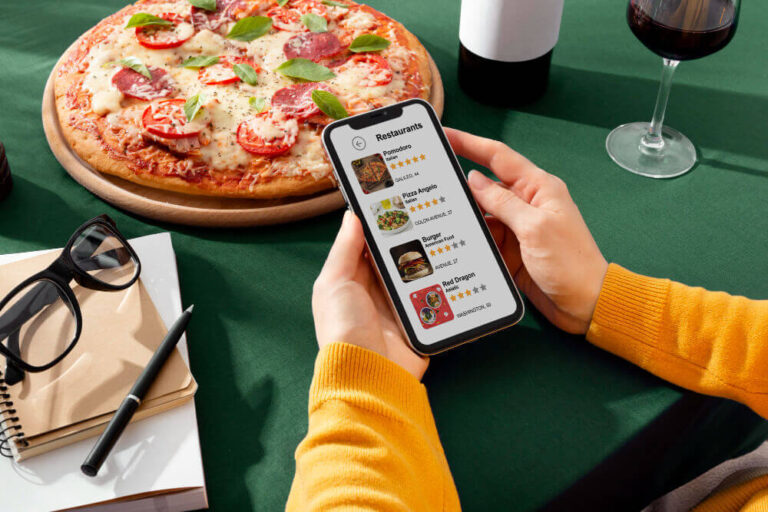Running a pizza shop requires more than just great recipes. It also depends on smooth operations that guarantee accurate orders, controlled inventory, and timely deliveries. The right POS system helps manage these tasks in one place, making it easier to handle both the kitchen and the front of house.
Technology now plays a significant role in how pizzerias grow and serve customers. From tracking ingredients to coordinating drivers, modern POS systems give restaurants the tools they need to stay organized and efficient. This article explores some of the best options available today that combine inventory tracking with delivery management.
Blogic Systems
Blogic Systems focuses on helping pizzerias maintain organized daily operations. It consolidates order entry, delivery tracking, and inventory control into a single system. Staff can handle custom toppings, split orders, and delivery details without needing to switch between tools.
The platform supports rapid training, enabling new employees to learn the system quickly. This reduces mistakes at the counter and in the kitchen. As a result, teams can smoothly transition orders from preparation to delivery.
Inventory tracking enables managers to view ingredient levels in real-time. This prevents shortages and makes it easier to plan for periods of high demand. Delivery management tools also allow drivers to receive accurate order details and routes.
Blogic Systems also provides features designed for restaurants that require steady performance, even in the event of an internet outage. This makes it a practical option for pizza shops that depend on consistent order flow. By combining these functions, the system helps streamline both front-of-house and kitchen tasks.
Square for Restaurants
Square for Restaurants offers a simple setup that works well for small to mid-sized pizzerias. It provides core tools for order entry, payment processing, and menu customization without requiring a long contract. This makes it appealing for operators who want flexibility and lower upfront costs.
The system includes real-time inventory tracking. Managers can see ingredient levels, set alerts for low stock, and reduce waste by identifying items that sell less often. This helps keep food costs under control while maintaining menu consistency.
Delivery management is also built into the platform. Staff can assign orders to drivers, track deliveries, and update customers with accurate wait times. As a result, the process stays organized and efficient during busy hours.
Square’s pricing model is straightforward, with a free entry option and paid plans that unlock more advanced features. This allows restaurants to start small and add tools as their business grows.
SpeedLine POS
SpeedLine POS specializes in meeting the specific needs of pizza restaurants. It supports both dine-in and delivery operations, making it useful for shops that handle a steady stream of orders. The system has been used by independent pizzerias for many years.
One of its strengths is the detailed tracking of inventory. Owners can monitor ingredient levels and adjust menus based on stock. This helps reduce waste and keeps ordering more accurate.
Delivery management is another key feature. The software includes tools for driver dispatch, route mapping, and order tracking. These functions help staff handle busy delivery schedules with better organization.
The interface is designed to be straightforward, so employees can move quickly between tasks. Menu customization, discounts, and order reminders add flexibility for different business models.
Because it is a locally installed system, SpeedLine POS may suit restaurants that prefer to keep data on-site rather than in the cloud. This setup can appeal to operators who want more control over their system.
Rezku POS
Rezku POS offers a full set of tools designed for restaurants that need both delivery management and inventory tracking. It supports dine-in, carryout, and delivery orders, making it a strong fit for pizza businesses that handle multiple order types every day.
The system includes real-time reporting and menu customization, which helps managers adjust quickly to changing customer demand. It also supports online ordering and payment options, so customers can place and pay for their meals without calling the restaurant.
Inventory control features help reduce waste by tracking ingredient use across all orders. Managers can view stock levels, set alerts, and make ordering decisions based on accurate data.
In addition, Rezku POS provides features like employee management, loyalty programs, and scheduling. These tools allow owners to streamline daily operations while keeping staff organized and customers engaged.
The platform is cloud-based, so updates and data remain accessible across devices. This flexibility helps restaurants maintain smooth service whether staff work on-site or manage tasks remotely.
Upserve POS
Upserve POS gives pizzerias tools to manage both in-house and delivery orders with ease. The system supports menu customization, which helps staff handle toppings, sizes, and special requests without confusion. This flexibility makes it easier for restaurants to keep orders accurate.
The platform also includes inventory tracking that updates as items sell. Managers can see ingredient levels in real time and plan purchases before supplies run low. This feature reduces waste and keeps kitchens better prepared for busy hours.
Delivery management is another key part of the system. Drivers can be assigned orders quickly, and customers receive accurate updates on timing. This helps restaurants keep service organized and improves the overall order flow.
In addition, the POS integrates reporting tools that show sales trends and costs. Owners gain insights into performance without needing separate software. These features make it easier to balance customer service with back-end operations.
Conclusion
A pizza POS system with strong inventory tracking and delivery management helps restaurants keep operations organized and efficient. These features reduce mistakes, save time, and improve order accuracy for both staff and customers.
Systems that connect menu customization, ingredient control, and driver management create smoother workflows. As a result, restaurants can handle more orders without losing consistency or speed.
The best choice depends on the size of the business, the type of service offered, and the need for features such as loyalty tools or reporting. By focusing on inventory and delivery functions, owners can select technology that supports both daily tasks and long-term growth.


